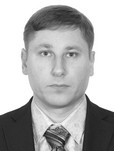Games and game elements driven physical trainings of junior sprinters
Фотографии:
ˑ:
Postgraduate student A.V. Lazutkin
State University of Humanities and Social Studies, Kolomna, Moscow Region
Objective of the study was to analyze benefits of the games and game elements driven physical trainings of junior (12-14 and 14-16 year old) sprinters. Applied for the study purposes was a combination of telemetric tests to rate effects of the controlled speed and speed-strength excelling game elements, profile the trainees’ functionality on a real-time basis and effectively control and manage the training process on the permanent test basis. The authors believe that the training workloads, volumes and difficulties shall be gradually increased in every training stage for the progress. A special priority shall be given to periodical high-intensity and high-volume trainings, with the training practices being managed on a prudent and persistent basis for the athlete to attain the best possible results. It is also important that the heavy training workloads will be managed with account of the athlete’s fitness and wellbeing and supported by positive emotional backgrounds – which are easily secured and generated by the training games and game elements.
Keywords: junior sprinters, method, physical qualities, training process, track and field athletes, game driven training, active games.
References
- Lazutkin A.V., Veselkin M.S. Rezhimy energoobespecheniya trenirovochnyih nagruzok yunyih begunov na korotkie distantsii [Energy training modes in youth sprint]. Chelovek, zdorovye, fizicheskaya kultura i sport v izmenyayuschemsya mire [Man, Health, Physical Culture and Sport in a Changing World]. Proc. XXIII intern. conf (electr. app.) ME MR SUHSS. Kolomna: SUHSS publ., 2018, pp. 473-476.
- Ovchinnikov N.D., Matveev Yu.A. et al. Kompleksnaya kolichestvennaya otsenka vliyaniya usloviy i intensivnosti sportivno-trenirovochnyih nagruzok na organizm [Integrated Quantitative Assessment of Influence of Conditions and Intensity of Sports-Training Loadings on Body]. Teoriya i praktika fiz. kultury, 2014, no. 3, pp. 94-99.
- Nabatnikova M.Ya. [ed.] Osnovy upravleniya podgotovkoy yunykh sportsmenov [Fundamentals of control of junior athletes' training]. Moscow: Fizkultura i sport publ., 1982, 280 p.
- Semenov V.G., Maslovskiy E.A., Zakrevskiy V.I. et al. Innovatsionnaya sensorno-motornaya model osoznavaemosti dvizheniy na osnove imitatsionnogo matematicheskogo modelirovaniya makhovogo stilya sprinterskogo bega [Innovative sensory-motor model of movement awareness based on imitational mathematical modeling of swing sprint style]. Teoriya i praktika fiz. kultury, 2015, no. 7, pp. 73-75.



